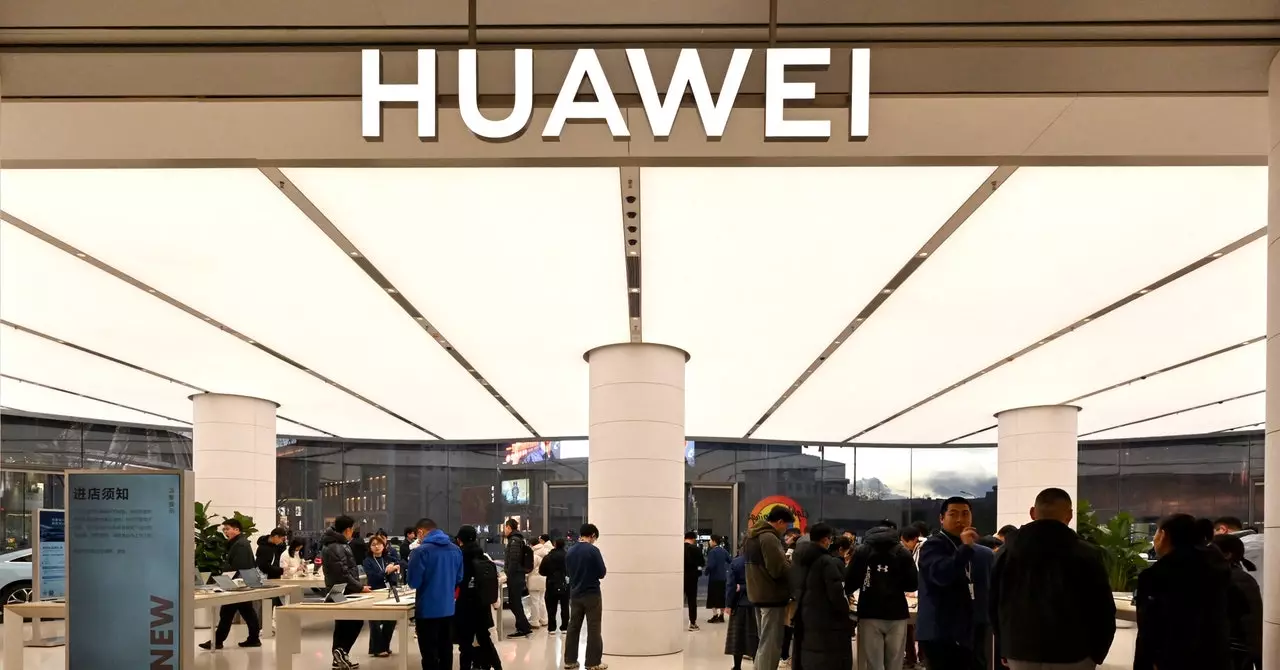Despite years of stringent export controls imposed by the United States aimed at curbing China’s semiconductor advancements, Chinese tech giant Huawei has managed to innovate and develop competitive technology in the AI training space. One notable development is Huawei’s launch of its Ascend chip, which has garnered interest from prominent companies such as ByteDance, the parent company of TikTok. This demonstrates a striking resilience within the Chinese tech sector, especially in light of the formidable US sanctions that previously hampered Huawei’s operations.
Recent reports indicate that firms like Baidu are pivoting away from traditional suppliers, such as NVIDIA, in favor of domestically produced chips from Huawei. This shift suggests a growing confidence in and dependency on local technology, which is a marked departure from past reliance on American firms. The increasing demand for Huawei’s Ascend chip underscores an evolving ecosystem in which Chinese companies are pushing boundaries to optimize their AI capabilities. The implications of such developments could resonate deeply across global technology landscapes.
The backdrop of these advancements can be traced back to export restrictions initiated during the Trump administration, which aimed to limit China’s access to cutting-edge technology. The establishment of an entity list that restricted several burgeoning Chinese AI firms highlights the escalating tensions between the two nations, particularly in technology and trade spheres. The Biden administration further intensified these measures by imposing tighter controls on the export of advanced GPU chips to China, aiming to stifle its AI ambitions.
While these sanctions are designed to blunt China’s technological progress, there are emerging arguments suggesting that they may inadvertently catalyze domestic advancements in semiconductor production within China. With increased pressure from international restrictions, Chinese companies may be motivated to innovate more aggressively, potentially accelerating their self-sufficiency in semiconductor manufacturing. The unveiling of Huawei’s Mate 60 smartphone, equipped with advanced chips developed by the Chinese chip manufacturer SMIC, signals that significant strides have been made in domestic tech capabilities and manufacturing processes.
Moreover, developments in sectors not strictly governed by US export controls, such as solar energy and electric vehicles, showcase that China is making headway by diversifying its technological focus. These advancements not only bolster China’s status in the green tech arena but also further establish its independence from US technological dependence.
Overall, while the US export controls were intended to limit China’s technological progress, the resilience and adaptability demonstrated by Chinese companies, particularly in the semiconductor and AI sectors, emphasizes a complex interplay of competition and innovation. It raises crucial questions about the efficacy and long-term impacts of such restrictions and highlights the ongoing shift in the global technology landscape towards a more self-reliant China. As these dynamics continue to evolve, it will be imperative for global players to reassess their strategies and positions in the face of an increasingly competitive technological landscape.

